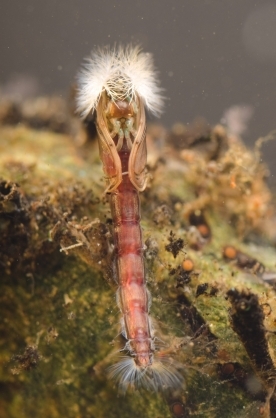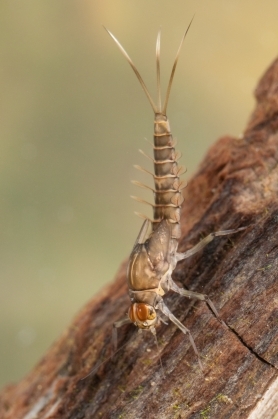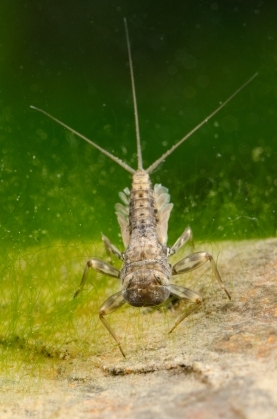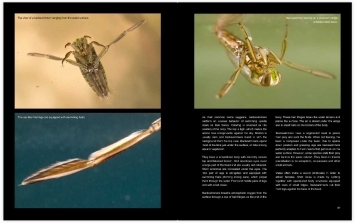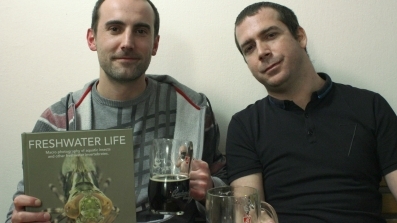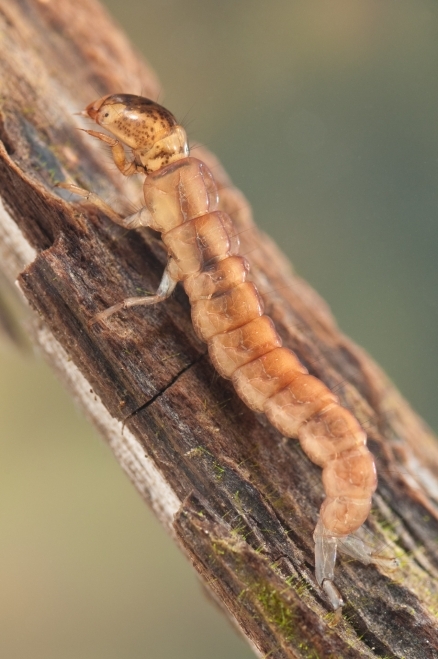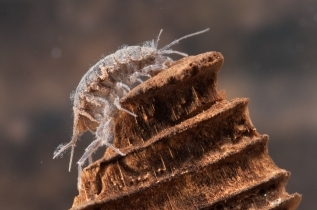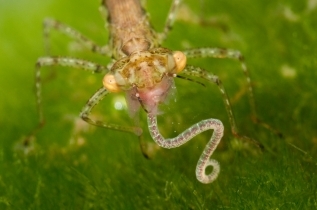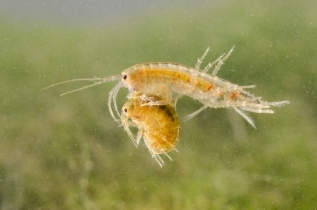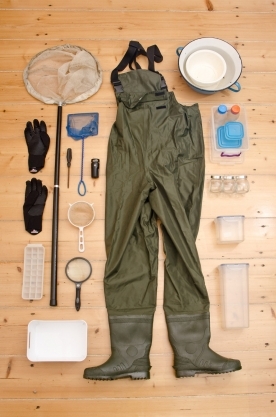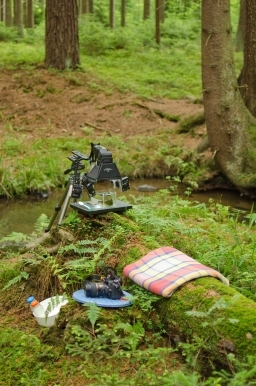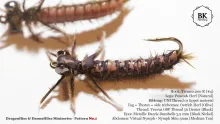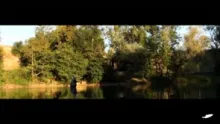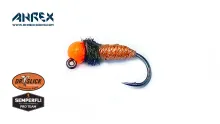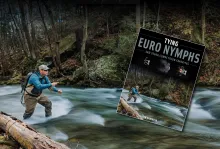This book gives you the opportunity to make a connection with aquatic animals. You can watch these images over and over again. It is also full of information in the texts and pictures.
Updated or edited 10 months ago
For anglers, "thinking like a fish" may help catch more fish. It's a long time proven truth. But for us freshwater fly fishers there can be one level more helpful than that: "thinking like a bug".
Fly fishing for trout and grayling requires at least basic knowledge of entomology. Without insects we don’t have fly-fishing, and entomology is our biggest confederate. Many times it will lead us on the right path to catch more fish.
The first comprehensive work related to the entomology associated with fly fishing was The Fly-Fisher's Entomology, published in 1836 by Alfred Ronald. Since that time a lot of words and books have been written on the subject. We have a lot of sources to learn from. Yet, there is a word saying, that a picture is worth more than a thousand words.
I would like to introduce you to a photography book, which I met somewhere on the internet a few weeks ago. An eye catcher for me as a nature-lover, but what's more: a candy for me as a fly-fisher.
And as a surprise I found that the book was made by a guy from my country, the same city and even the same part of town. Living just on the other side of the river Vltava, the sweet home of many of these little critters.
The author, Jan Hamrsky, lives in Prague in the Czech Republic, employed here as a graphic designer. He is 33 years old, married and has two kids, twin boys. He studied polygraphy at secondary school, and Art and Design at the university, where he had his first serious contact with photography.
We are sitting in a famous Prague pub "U Medvídků" among the books and beers talking about his passion - macro photography of freshwater invertebrates.
It all started years ago when he came across the book "Close-Up and Macro: A Photographer's Guide" by Robert Thompson. He was astonished by the detailed macro photos of insects presented there. Since that day Jan was lost for these tiny underwater creatures.
"They are beautiful in their ugliness or bizarreness. I can admire lots of amazing adaptations, behaviors, camouflage, hunting strategies, body shapes, structures. Aquatic insects are just fascinating". He explains and continues "For example, the surface tension is more challenging for these critters than the gravity, that's one of the reasons why they look like a deep space aliens to us..."
There are macro photographers who shoot dead insects. It's an easier way to do it. Jan did not approve this technique. He always keeps them alive and after a "photo shoot" he puts his "models" back to their home water.
He goes even further with his care. "Once the insects are in the photographing aquarium if they start hunting or looking for food, it indicates that conditions are just fine."
Jan Hamrsky
He also understands the ecological impact.
"Aquatic insects are often used to determine water quality based on the type and number of species present. They actually actively participate in keeping water quality within functioning freshwater ecosystems. Breaking down decaying organic matter, some are filter feeders, which keep the water column cleaner, enabling light to reach the plants at the bottom. Others bring oxygenated water to the sediments when burrowing."
Some insects Jan can find literally in front of his house, while he must travel to find others. He does a lot of shooting near their family summer house, in the pristine waters of the Bohemian-Moravian Highlands.
"A couple years ago I discovered that if I put a net into a creek or pond, I’d pull out some of the weirdest and most amazing creatures I could imagine. Many insects live aquatically, for part or all of their lives. I set myself the challenge of figuring out how to photograph these animals, which exist at a scale and in an ecology that resists conventional photography."
After all the years he has been doing this, the moments when he pulls the catching net out of the water and finds some, for him, new species are more and more rare. That's why he already has a dream about traveling to South America, to fulfill his camera hunts…
And after that the rest of the world, I'm sure.
"Of course, the beginnings were quite difficult, and the results were unconvincing. But each attempt led to improvement and I came to new things (which still holds true)."
The book is a result of countless hours of work during 8 years. The main part of the book consists of very aesthetic, beautiful, colorful and detailed photographs. Covering all main groups and/or the most interesting freshwater invertebrates. These are accompanied by text with a basic characterization of a given animal. Jan is not an entomologist by a profession, rather a big enthusiast. He wrote the supporting texts himself, but he always let professional biologists confirm their accuracy.
The very last part of the book is kind of step by step manual for photographers and all macro enthusiasts intending to explore the fascinating world of aquatic invertebrates. The book is available in a large format 21 x 26 cm (8 x 10 in), hardcover or softcover and a premium matte paper are used for the best image quality.
The book includes:
• 43 groups of freshwater invertebrates.
• Over 220 photographs of live specimens.
• Tips for collecting and keeping the animals.
• Recommendations for arranging the scene in an aquarium.
• Aquatic macro photography equipment, methods and workflow.
The quality of the images is very unique. You will find interesting compositions, lighting and perspective, pointing to the author's true profession as a graphic designer, and also his strong aesthetic sense.
"Macro is a discipline where many photographers have to mess around and create their own equipment or customize existing ones for individual needs, meaning: holders, bounce plates, diffusers and so on. I have a Nikon D300S camera body, three macro lenses – 60, 90 and 180 mm which I combine with automatic extension tubes."
Unlike most professional entomology photos, which are primarily descriptive, Jan’s pictures are also very close and intimate. It gives you the opportunity to make a connection with an actual animal. I can watch these images over and over again. Equally, it is full of information in the texts and pictures.
Jan Hamrsky
Jan told me that the final book came out almost as a "coffee table book". I have to agree, and I think it will be mostly the first and perhaps even the only one you will lift from that coffee table. It will catch you like a collecting net.
The price for a book can seem a bit high at first look. But the truth is that it’s not a business for Jan. He has very little profit from it. The book is self-published, every print is made to order.
Once you sit down with the book, open first pages and dive down into the underwater kingdom, you will see that it’s worth the money.
Photographing insects is a very time-consuming process. Family, kids, job… you can say this is enough activities for one man. But not for Jan. He told me that he believes another book is yet about to come. Trust me or not, he was talking about fly fishing...
- Log in to post comments

